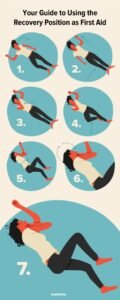Peak Flow Meter Use and How to Measure Your PEFR
Understanding Peak Flow Meters and How to Measure Your PEFR
A peak flow meter is a small handheld device used to measure your peak expiratory flow rate (PEFR) — the maximum speed at which you can blow air out of your lungs after a full inhalation. Monitoring PEFR at home is a practical way to keep track of your lung health, especially if you have conditions like asthma, chronic bronchitis, or emphysema.
Knowing your personal best PEFR helps identify early signs of breathing issues before symptoms even appear, which can be vital in managing chronic respiratory conditions effectively.
Why Use a Peak Flow Meter?
Monitoring your peak flow is a critical part of an asthma action plan. It helps you understand how open your airways are and provides early warnings if your condition is worsening.
Key Benefits of Using a Peak Flow Meter:
-
Monitor day-to-day breathing effectiveness
-
Detect signs of an upcoming asthma attack
-
Determine when to follow your asthma action plan
-
Identify asthma triggers
-
Evaluate if your current treatment is working or needs adjusting
For individuals with emphysema or chronic bronchitis, peak flow monitoring can track respiratory changes and measure how well treatments are working.
Who Should Use a Peak Flow Meter?
Peak flow monitoring is especially recommended for:
-
Adults and children over 5 with mild to severe asthma
-
Individuals with asthma who are not well-controlled
-
Patients whose medication plans are being adjusted
-
People with mild asthma not on daily medication
Your healthcare provider may advise testing once a day, several times a day, or only during specific periods such as illness or medication changes. It’s most effective to test early in the morning before taking asthma medication.
Peak Flow Testing for Children Under 5
Children under five may not be able to use a peak flow meter accurately. However, introducing the concept early can help them feel comfortable using it when they’re older and ready.
Choosing the Right Peak Flow Meter
Peak flow meters are portable, easy to use, and do not require batteries or electricity. They are available at pharmacies, medical supply stores, and online.
Types of Peak Flow Meters:
-
Mechanical (plastic spring-based): Typically cost between $10 and $25
-
Digital models: Range from $30 to $100, and often connect to smartphone apps for tracking data
If you need one for both home and work, it’s best to use identical models to avoid discrepancies in readings. Always consult your healthcare provider before choosing a device.
Will Insurance Cover a Peak Flow Meter?
Some insurance plans may cover the cost of a peak flow meter or reimburse part of the expense. Check with your provider about co-pays or co-insurance requirements.
How to Determine Your Personal Best PEFR
Your personal best PEFR is the highest reading you achieve over a 2–3 week period when your asthma is well-controlled. Testing should be done:
-
2 to 4 times a day
-
At the same times each day
-
While feeling healthy and symptom-free
Comparing future readings against this personal best helps you detect early declines in lung function.
Discussing Results with Your Healthcare Provider
When determining your personal best, make sure to clarify:
-
How often and at what times to test
-
How long to monitor your PEFR
-
Whether a follow-up appointment is necessary
-
If test results can be shared via phone or app
-
When to increase testing (e.g., during illness or symptom flare-ups)
-
Whether to test before or after taking medications
When to Use a Peak Flow Meter
You can use the peak flow meter at home, work, or school, depending on your doctor’s instructions. Testing consistently at the same time each day gives the most accurate picture of your respiratory health.
How to Use a Peak Flow Meter Correctly
Regardless of whether you’re testing your personal best or doing routine checks, the method remains the same. Here’s how:
Step-by-Step Instructions:
-
Ensure the meter is clean and free of obstructions
-
Stand or sit up straight
-
Slide the marker to the base of the numbered scale
-
Take a deep breath
-
Place the mouthpiece in your mouth, sealing your lips tightly
-
Blow out as hard and fast as you can in a single breath
-
Note the reading
-
Repeat three times and record the highest number
Cleaning Tips:
To maintain accuracy and hygiene:
-
Soak in warm water with mild dish soap for 3–5 minutes
-
Rinse thoroughly and air-dry before use
-
Never use if the device is dirty or wet inside
Are There Any Restrictions Before Testing?
There are no food or drink restrictions before testing. However, be sure to remove anything from your mouth (e.g., gum, candy) before blowing into the device.
Frequently Asked Questions (FAQs)
What is a peak flow meter used for?
It’s used to monitor breathing capacity and detect early signs of asthma flare-ups or worsening lung conditions.
How much does a peak flow meter cost?
Basic models range from $10 to $25, while digital models can cost between $30 and $100.
What is a normal peak flow reading?
“Normal” varies by age, gender, height, and ethnicity. Your personal best reading—taken during a symptom-free period—is the most reliable baseline.
How often should I test my peak flow?
Follow your provider’s guidance. Most people test once daily in the morning, while others may test multiple times daily during treatment adjustments or illness.
Should I test before or after medication?
Usually, it’s advised to test before taking asthma medications unless otherwise instructed.
Key Takeaways
-
Peak flow meters help track breathing performance and asthma control
-
Knowing your personal best PEFR helps identify early signs of trouble
-
Consistency and cleanliness are essential for accurate readings
-
Always follow your healthcare provider’s instructions for best results
Want More Tips on Managing Respiratory Health?
Subscribe to our newsletter for expert advice, tools, and support on breathing better every day.




